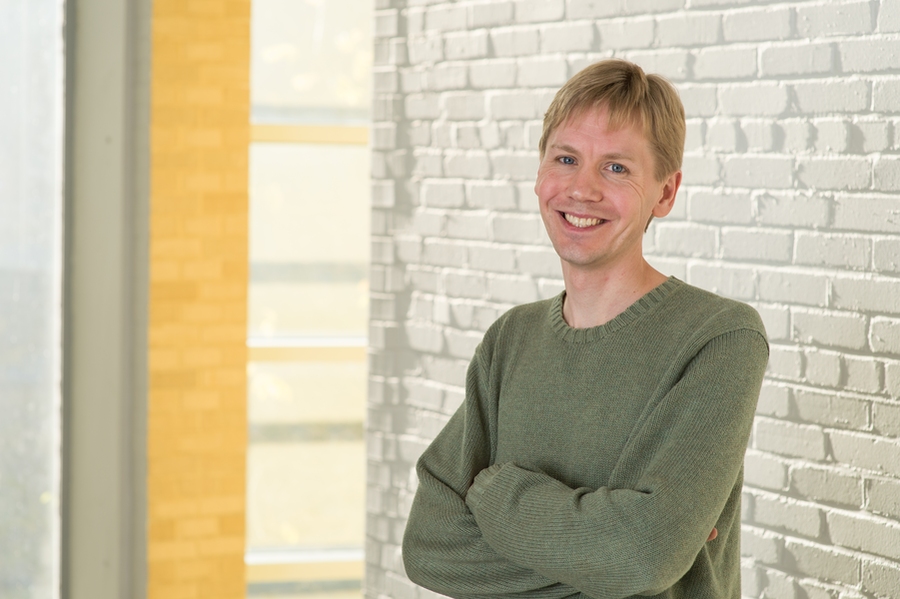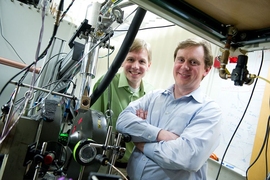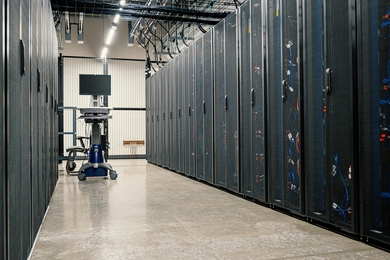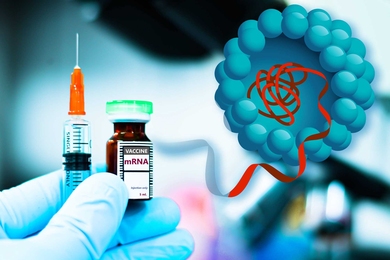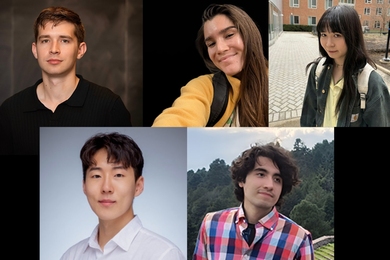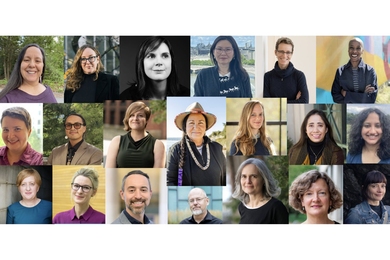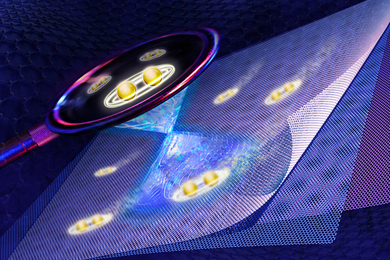Troy Van Voorhis remembers being jolted by the announcement in 1989, when he was in the seventh grade, that researchers had successfully demonstrated cold fusion.
“My science teacher canceled our regular class to explain this remarkable development,” recalls Van Voorhis, the Haslam and Dewey Professor of Chemistry at MIT. “The idea really captured my imagination, and I was hooked on the possibility that you could produce energy from the physical reactions of chemicals.”
Although the apparent breakthrough quickly proved to be spurious science, it ignited Van Voorhis’ lifelong interest in energy and chemistry. Nearly three decades later, the theoretical chemist investigates what he calls “energy-related big questions.” He scrutinizes and models the behavior of electrons in research that, among other things, seeks to improve the photovoltaic cells used in solar energy; to develop new, high-efficiency indoor lighting; and to create chemical storage technology for electricity generated by renewable energy technologies.
While his fuse for scientific discovery was lit early on, it took time for Van Voorhis to find his niche exploring the intricate dynamics of molecules involved in processes that produce, transfer, and store chemical energy.
Raised in the Northside section of Indianapolis by a father who taught junior high school mathematics and a mother who was a professor of social work, Van Voorhis was, in his own words, a “shy, introverted child.” In high school, he found theater a constructive way to break out of his shell. “Interacting with an audience was easier than interacting with individuals,” he says.
Van Voorhis also spent a lot of time “playing with mathematics problems because it was something you could do on your own.” But he worried about pursuing the subject as a college major because, he says, “it seemed too abstract.” Instead, he decided to pair math with chemistry, another area he excelled in during high school.
In college, as he describes it, Van Voorhis pursued “curiosity-based science,” first at Rice University, where he earned his BA as a double major in 1997, and then at the University of California at Berkeley, where he conducted his graduate studies in chemistry. One area that captured his imagination involved finding better ways to describe mathematically how chemical bonds rupture. “It was a question I thought sounded interesting, a difficult problem,” he says. “But it was not something that proved to be useful to other people.”
Pairing up
It was not until Van Voorhis landed at MIT, he says, that he understood that his technical tools “might actually solve really important problems.” He credits a formative encounter in his early days as an assistant professor with bringing about this revelation.
“I sat down to lunch with the late, great theoretical chemist [and former dean of the School of Science] Robert Silbey and told him I was stuck on a direction to take as I started out,” Van Voorhis recalls. “He told me to talk to experimentalists at MIT, who were working on the most exciting problems, ask them how I could help them, and then hitch myself to their wagons.”
Wasting no time, Van Voorhis found an eager experimentalist partner in Marc Baldo, who is now a professor of electrical engineering and computer science. Baldo, who had also recently arrived at MIT, was looking into the application and potential benefits of organic chemicals in light-emitting diodes (LEDs) and solar cells. “I told him my lab worked on simulations involving electrons and chemical bonds and maybe we could help him,” says Van Voorhis. “It was the start of a beautiful friendship.”
It also launched a fruitful research collaboration. In their very first project together, Van Voorhis provided the computational firepower to help Baldo demonstrate that subtle manipulations of energy states in organic LEDs could improve efficiency in light output. The technical skills that Van Voorhis brought to MIT had found a novel and practical outlet.
Starting in 2005, Van Voorhis and Baldo began focusing on ways to push past longstanding limits in a range of energy technologies, starting with solar power from photovoltaic (PV) cells.
Since the first silicon solar PV panels were invented in the 1960s, they have managed to achieve at best 25 percent efficiency as they absorb photons from the sun and convert that energy into electrical current.
Van Voorhis and Baldo demonstrated that it was possible to overcome this limit. Normally, a single photon yields one electron plus waste heat. But by lining solar cells with organic molecules, they figured out how to take a photon and produce two electrons, generating twice as much electricity and less waste heat.
“Marc and I theoretically proved it might be possible to use fission in a device to make a solar cell more than 100 percent efficient,” says Van Voorhis.
Catalyzing brighter solutions
In other domains of research, Van Voorhis and Baldo are testing organic dyes that could help make organic LEDs brighter and perhaps as long-lasting as current conventional LEDs — up to 100,000 hours.
They are also actively investigating chemical-based energy storage in the hopes of helping to bring renewable energy sources such as solar to scale. “The energy content of a normal gas-powered car battery, which weighs 25 pounds, is the same as a quarter-pound Big Mac,” Van Voorhis says. “There’s a huge incentive to convert electricity into chemical fuels that are energy-dense, but we need to find the right abundant and cheap catalyst for making chemical conversions possible.”
One catalyst candidate, a super-thin sheet of graphitic carbon, doped with elements such as nitrogen, boron, or sulfur, presents intriguing possibilities as the basis for a new type of fuel cell. Van Voorhis is now running high-throughput computational simulations to figure out the best kind of molecules to pair with graphite for the optimal electrochemical conversion cocktail.
For these research endeavors, Van Voorhis draws inspiration not only from faculty colleagues but also from students. In his primary teaching assignment, the introductory class 5.111 (Principles of Chemical Science), Van Voorhis says he incorporates “bits from my research on photovoltaics and alternative fuels, helping students make connections and see the relevance of these ideas.”
“My greatest pleasure in teaching is seeing the lightbulb go on for students — that instant where a topic goes from a complete mystery to something that is just starting to make sense,” he says.
Van Voorhis views mentoring graduate students as a lifelong relationship.
“My job as an advisor is to help them become independent scientists, and I find that exposing them to problems of long-range societal relevance like energy or the environment is crucial to them developing into responsible, mature researchers who will be able to devote their skills to problems of significance,” he says.
He says he is also heartened to see so many among his MIT students who are “socially conscious and motivated to work on energy questions,” including in his own laboratory. He finds this engagement reassuring, given that many of the challenges he works on in energy technology may take years to solve.
“With problems this big, I have to be comfortable being a cog in a very large machine, where I do the part I’m good at and rely on someone else to do their part, and together we solve the problem.”
This article appears in the Spring 2017 issue of Energy Futures, the magazine of the MIT Energy Initiative.
